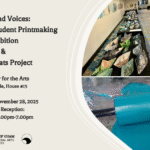
If you picked up a craft or creative hobby during the COVID lockdowns, this may well have helped you through that period. A new study from researchers in the United Kingdom, published today in Frontiers in Public Health, suggests that creative activities boost mental health.
Creative hobbies such as crochet can benefit mental health, according to a new study.
The study used information from the Taking Part survey, which is carried out annually by the UK’s Department for Culture, Media, and Sport (DCMS) to learn more about people’s hobbies and how they spend their spare time. Many existing studies that look at the benefit of arts and crafts on mental health tend to look at one single activity. But by studying the responses from 7,182 participants in this survey, researchers could get a sense of the broad impact of creative endeavors in general.
“Crafting and other artistic activities showed a meaningful effect in predicting people’s sense that their life is worthwhile,” study leader Helen Keyes told Frontiers. Keyes, a cognitive psychologist at Anglia Ruskin University, adds, “the impact of crafting was bigger than the impact of being in employment. Not only does crafting give us a sense of achievement, it is also a meaningful route to self-expression. This is not always the case with employment.”
Even though people with creative pastimes reported higher levels of happiness, there was no noticeable change in their level of loneliness. That’s not surprising if you consider that many creative hobbies can be practiced alone.
Working with such a large sample also made it easier to correct for other factors that could influence people’s wellbeing, such as age, gender, or socio-economic factors. Even with those adjustments, there was still a noticeable difference between people who said they had done at least one craft activity in the past year and people who did not. “Engaging in these activities is linked with a greater sense that life is worthwhile, increased life satisfaction and happiness,” said Keyes.
When participants were asked about their general levels of happiness or how satisfied they were in life, the crafters scored higher than the rest. Even though the effect of creative activities was relatively small, it’s in the same range as factors such as employment status. It’s a lot easier to pick up a craft than to find a new job, so crafting could be a simple way to improve wellbeing.
“Governments and national health services might consider funding and promoting crafting, or even socially prescribing these activities for at-risk populations, as part of a promotion and prevention approach to wellbeing and mental health,” said Keyes.
However, correlation is not causation. The fact that the crafters overall report higher levels of wellbeing doesn’t necessarily mean that crafting was the reason for their increased happiness. Keyes says, “the next step would be to carry out an experimental study where we measure people’s wellbeing before and after significant periods of crafting.”











